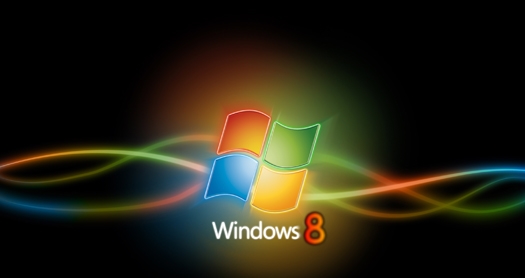Windows 8: It is the best of Microsoft; it is the worst of Microsoft
At this writing Windows 8 could be the biggest thing Microsoft has done wrong — ever. But it could also wind up being one of the best things it has ever done.

By CEO Steve Ballmer’s own description it is the one of the top three major events in the company’s history, grouped with IBM PCs adopting MS-DOS and the advent of Windows 95.
By that measure, if it’s a flop it’s huge.
IN PICTURES: Top network and IT industry stories of 2012
NEWS: Dell’s acquisitions not yet paying dividends
MORE: Worst security snafus of 2012
Windows 8 drives users crazy. It’s a two-headed operating system that supports the traditional Windows keyboard-and-mouse interface as well as a touch-centric UI that many say is baffling, at least initially.
Then toss in a separate version of Windows 8 called Windows RT. It’s a hardware/software bundle based on ARM processors that doesn’t support traditional Windows x86 apps — only so-called Windows Store applications that rely mainly on touch. Confusion reigns.
A version of the traditional desktop remains in Windows 8, but it’s different enough to be uncomfortable. Users want an OS that builds on the past, not one that reinvents itself entirely. They lament the loss of the Start button and Start Menu upon which they relied.
When learning the Windows 8 touch interface they find it difficult to find and remember, say, how to turn the machine on and off, close applications, remove applications, switch among four or five apps running at the same time, find Charms, figure out what Charms are, etc., etc. It’s a near-perfect storm of consternation and frustration.
Meanwhile the company’s traditional PC market is being threatened by devices running Linux, Android and OS X even as sales growth of traditional PCs gets slower and slower, apparently headed for decline. That’s Microsoft’s bread and butter.
Compounding the problem, tablets and smartphones are gaining popularity as personal and business productivity platforms and arguably represent the main force undercutting traditional PCs. Microsoft comes in a distant third in both areas.
Windows 8 is supposed to help Microsoft make gains in these areas. But given its slow start so far and comparing it to the wild success of every version of iPad that ever launched, then Windows 8 is lining up to be a disaster.
So what was Microsoft thinking?
Windows 8 is designed to tap into the shift in demand away from traditional desktops and laptops and toward phones and tablets.
Core to this strategy is making a shift to mobility and creating an application environment transferrable from device to device. The advantage: Massive blocks of code from an application written for Windows 8 can be readily repurposed for apps written or Windows Phone 8 — making it feasible for these apps to be available on any Windows device.
Because Windows Store apps are written primarily for touch, their navigation is similar from tablet to notebook to phone. Applications are available for phones, tablets and laptops, and if you master them on one category of device, you’ve mastered them for all.
These applications, called Windows Store apps, represent a new category optimized for touch and for running on lower powered mobile machines based on ARM processors to promote longer battery life.
In addition, Windows 8 heavily promotes use of cloud services. It comes with cloud-based music free and integrates SkyDrive, Microsoft’s 5-year-old cloud storage service that enables sharing data among devices and syncing them with each other. It comes with 7GB of free storage.
The bottom line is customers can access the latest versions of their data and all their stored files from whichever device they happen to have with them so long as they have Internet access.
The problem is that this elegant scheme is lost on customers, analysts and reviewers who don’t buy into this view. With education, customers could be won over, but not in the short-term, and particularly with RT. Business customers will have to adopt Windows Store apps or virtualize, and that takes time.
“It will take 10 or more years before most organizations completely transition to WinRT technology, which, if successful, will represent the next 20 to 30 years of Windows,” says Gartner in its report “Windows 8 Changes Windows as We Know It.”
Beyond Windows 8, Microsoft has scored some hits and some misses this year with new products acquisitions. Here are four of each.
RIGHT
Windows Server 2012
Microsoft’s latest version of Windows Server is to be applauded for how it simplifies many areas of virtualization, which leads Network World reviewer Tom Henderson to write, “What the Windows 2012 Server editions provide is a compelling reason to stick with Windows infrastructure, as many of the advances represent integration of management components that have no competitive parallels.”
The software streamlines live migration of virtual machines for reasons of preventing performance of one instance degrading because it is overwhelmed by demand. Windows Server 2012 removes the need for designating failover clustering ahead of time and a separate SAN to share storage among instances that were required in Windows Server 2008.
Windows Server 2012 also offers replication of virtual machines asynchronously. Called Hyper-V Replica, the feature is ideal for replicating VMs from site to site over limited WAN links.
A new feature called Storage Spaces treats hundreds of disks as a single logical storage reservoir and ensures resiliency by backing up data on at least two physical disks. The feature sets aside a designated storage area — called a space — for a defined category of data within the entire available disk capacity — called a pool.
Storage Spaces can allocate a space that is larger than the actual available physical capacity of the pool that the space is carved out of via thin provisioning. This keeps data from overflowing the space by freeing up capacity whenever files are deleted or an application decides that such capacity is no longer needed.
Windows Server 2012 also enables managing servers in groups and includes an automated tool to periodically check for proper server configuration.
System Center 2012
This management suite offers new tools to better handle closely related cloud environments and virtual data centers, and has expanded the products it can manage to include some of the virtual environments of rivals Citrix and VMware.
The platform includes broad support for managing smartphones based on Microsoft’s phone OS, but also those from Apple and from a range of vendors that base their phones on Android.
The Virtual Machine Manager, Orchestration Manager and Operations Manager can combine to make management of virtual environments simpler. For instance, the management suite streamlines configuring virtual machines to pick up the function of others when they go down so help desk workers can perform the task without escalating.
In a practical sense, System Center can give developers the capability to create and tear down virtual machines for their test environments within parameters set by network executives.
One downside is that upgrading to System Center 2012 requires a lot of network prep as well as education to learn what other Microsoft products are required in order for the various modules to work.
Buying Yammer
Microsoft spent $1.2 billion this year to buy Yammer as a way to beef up social networking and collaboration in its SharePoint, Office, Dynamics CRM, Lync and Skype platforms.
When its integration is completed over the next few years Yammer will add tracking of conversation threads and enterprise search to these applications, aggregate news feeds, manage documents and unify user identities.
Yammer is already available with Microsoft’s Office 365 cloud offering and will gradually permeate the company’s other collaboration and productivity platforms, the company says.
With the purchase Microsoft has bought the tools it needs to set itself up well in support of new ways corporations do business using tools that end users have become familiar with via their use of consumer social networks.
Targeting botnets
Microsoft did itself proud this year disrupting the Nitol botnet with a combination of technical and legal innovation, as well as seizing servers belonging to the worst instances of the Zeus botnet. 
These efforts represent the fourth and fifth times Microsoft has intervened to shut down or a least temporarily cripple criminal malware enterprises.
The company’s Digital Crimes Unit started its aggressive action in 2010 and continued steadily since then. While its work won’t halt online abuses, its proven commitment to causing periodic significant damage to them does make criminal activity more difficult, and that steady opposition helps raise the bar for criminals hoping to enter the game.
The effort sends a message to other criminals that Microsoft might strike them at any time, says Richard Boscovich, assistant general counsel for the DCU.
WRONG
Euro browser flap
Microsoft failed to live up to an agreement that it would display a Windows screen giving users the option to pick Internet Explorer or some other browsers.
While Microsoft says the problem was caused by a technical glitch and has worked to correct it, it’s still facing down a possible $7 billion fine from European Union regulators. While Microsoft would likely survive the hefty penalty, it’s really a case of the company shooting itself in the foot. It is also damaging its reputation in not only Europe where customers were directly affected, but worldwide where end users heard about the case and adjusted their opinion of the company accordingly.
Windows Phone
The launch of Windows Phone 8 this fall revealed an operating system that met with generally good reviews and a phone — Nokia’s Lumia 920 — that shows it off to good advantage.
The problem here is that it comes so late after the iPhone and Android phones have dominated the market. The company must now dedicate itself to a long-term effort to scratch its way up from 2.6% of the market, according to IDC estimates, to something more significant.
IDC thinks Microsoft will succeed in that goal by claiming 11.4% of the market in 2016 — a terrific boost. But the company leaves a lot of smartphone money on the table by coming out so late with a compelling product.
Windows Phone 8 itself may pan out to be a winner, but the overall handling of Windows Phone to date racks up as a loss. And with Microsoft’s desire to link all its mobile platforms, a slow start for Windows phone hobbles that larger effort.
Licensing hikes
Microsoft boosted by 15% the fees it charges for licenses that allow users to access servers, squeezing more money out of customers while still giving them a better deal than the alternative.
This is likely good for Microsoft because it means more revenues, but it’s just another reason for business customers to carp about being gouged for software.
Corporate employees are moving toward use of multiple devices in the workplace, making licenses based on numbers of users attractive rather than licenses based on individual devices. Even with the price hike, many customers will wind up paying less for user client access licenses (CAL) than for device CALs. But that won’t eradicate the bad taste from their mouths.
Fanned Flame
The complex Flame espionage malware that infected Iranian government computers earlier this year was in part enabled by a Microsoft security snafu.
A key element of Flame called for exploiting weaknesses of the MD5 hashing algorithm. Microsoft had urged in 2008 that network administrators and certificate authorities stop using the hash because researchers had discovered how to exploit it.
Microsoft officially disallowed its use in 2009 but failed to weed it out of its own products, particularly Terminal Server Licensing Service. Researchers figured out how to compromise MD5 using what they call collision attacks to obtain fraudulent certificates that are accepted as real. This allowed attackers to send malware that victim machines accepted as authenticated Microsoft updates.
Best Microsoft MCTS Certification, Microsoft MCITP Training at certkingdom.com
